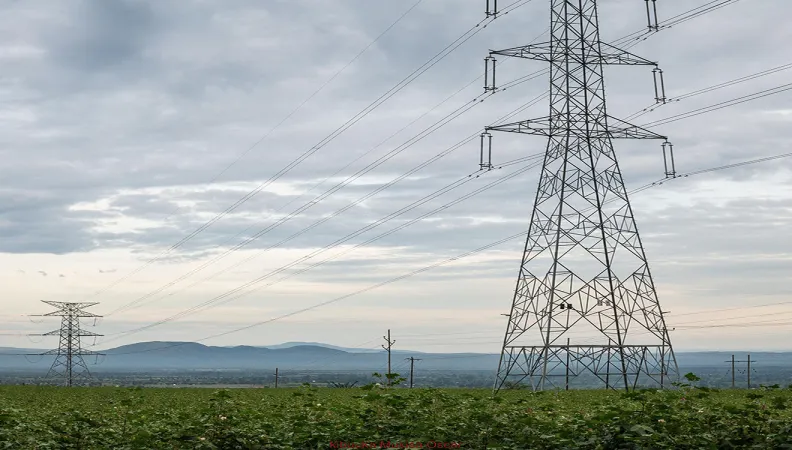Share the page
Boosting Access to Renewable Energy across East Africa
Published on

East Africa is endowed with resources capable of generating vast amounts of renewable energy, such as wind, hydro and solar power. In Tanzania and Uganda though, this energy is largely untapped, and the majority of their populations remain unconnected to an electric grid. Now, this is changing. Access to electricity expanding in Kenya too, thanks to the use of renewable energy. Four flagship projects funded by AFD are now under way to boost access to sustainable energy across the region, which will have ramifications for people’s health, security and standard of living.
A lack of electricity can have serious consequences for people’s health and livelihoods. Food can’t remain fresh in refrigerators. Hospitals often lack electricity to power medical devices and to refrigerate vaccines. Those that have the means, rely on generators, which tend to pollute and can be costly to run.
To augment access to energy that is both reliable and sustainable, several projects are being funded by AFD and its partners across Tanzania, Kenya and Uganda, in a region where rural households in particular lack access to clean energy.
Read more: African Renewable Energy Scale-up
TANZANIA
Tanzania’s access to electricity has climbed from less than 5% in the 1990s to about 40% in 2020. And while that is still below the continent’s average, it’s one of the fastest rates of electrification in Sub-Saharan Africa. Much of the progress made has been thanks to renewable energy: close to half of the country’s electricity now comes from hydro.
But with insufficient rain and water shortages for the turbines to generate energy, the country needs a wider range of renewable sources for a supply that is more reliable and extends to more households.
Construction is under way of the country's first solar photovoltaic park. With a projected capacity of 150 Megawatts, it will be the second largest solar PV plant in East Africa. AFD is financing the first phase, which will generate50 Megawatts (MW), and modernize the country’s grid operating system.
The project also includes a capacity-building component for Tanzania’s Electric Supply Company – Tanesco, which includes training and technical assistance, for the integration of renewable energies in the Tanzanian energy mix.
Read more: AFD to Finance Tanzania’s first Grid-Connected Solar Power Plant
The program will increase Tanzania’s renewable energy share in the power generation mix, and is part of AFD’s effort to ensure that 50 % of annual financing goes to projects that have a direct and beneficial impact on the climate, in line with the Paris Agreement.
Rural Electrification
Still, there is a wide urban-rural divide. While close to three quarters of urban areas have electricity, just one quarter of rural households have access.
AFD is supporting a rural electrification scheme that aims to both densify the electricity network in rural households, and shift energy reliance away from diesel generators and other non-renewable sources, in favor of cleaner sources of energy.
The program, which is part of Tanzania’s National Electrification Program, is expected to reduce greenhouse gas emissions by an average of 10 ktCO2/year, and includes a solar hybridization component to replace two off-grid diesel power plants.
Read more: AFD Digital Energy: 8 Projects Recognized for Innovation in the Energy sector
UGANDA
While Uganda has made significant progress in expanding electrification in recent years, large parts of the country continue to rely on charcoal, fuel wood and other biomass sources. But the country is on a path to extending access to energy, much of it through hydropower.
To support the country’s continuing energy transition, AFD is financing a project to reinforce the electricity network in rural parts of Uganda with clean energy. The project will provide some 200,000 people with access to low-carbon energy and promote substitutes for fossil fuels.
It’s part of the country’s broader effort to expand electricity access. Seeking to raise the proportion of the rural population with energy access from less than 4.5% in 2011 to 26% by this year, the government has already surpassed its goal. Under its Rural Electrification Strategic Plan, primarily supported by the World Bank and backed by AFD and EU financing, 32% of rural households had access to electricity in 2020.
Read More: Uganda: Extending Rural Electrification to Boost Economic Dynamism
KENYA
With close to 90% of its electricity production mix composed of sustainable energy, mainly hydroelectric and geothermal, Kenya has one of the lowest carbon-intensive power systems in the region. Droughts however, strain hydropower, which has prompted the country to begin to exploit its significant solar potential.
State-owned operator, Kenya Electricity Generating Co. or KenGen, is developing a pilot solar project that will reinforce hydroelectric energy and improve coverage during peak periods. The project, which is likely to be supported by AFD, will boost energy levels already provided by Kenya’s Seven Forks Cascade, a dam that has not only provided clean energy, but prevented flooding downstream as well.
Together, these projects contribute to both the expansion of access to electricity, and the provision of clean, renewable energy as part of East Africa’s efforts to move away from fossil fuels.
